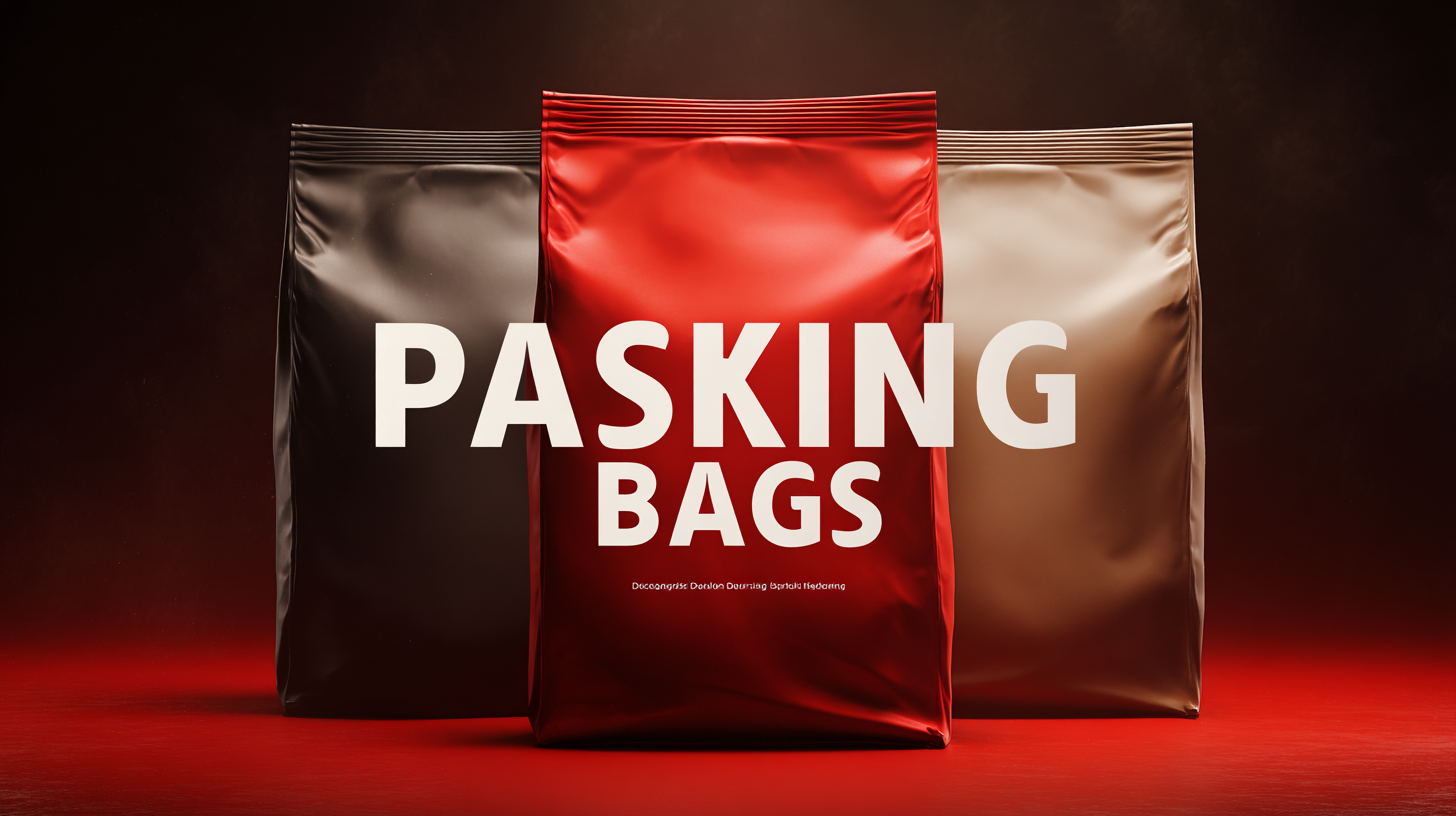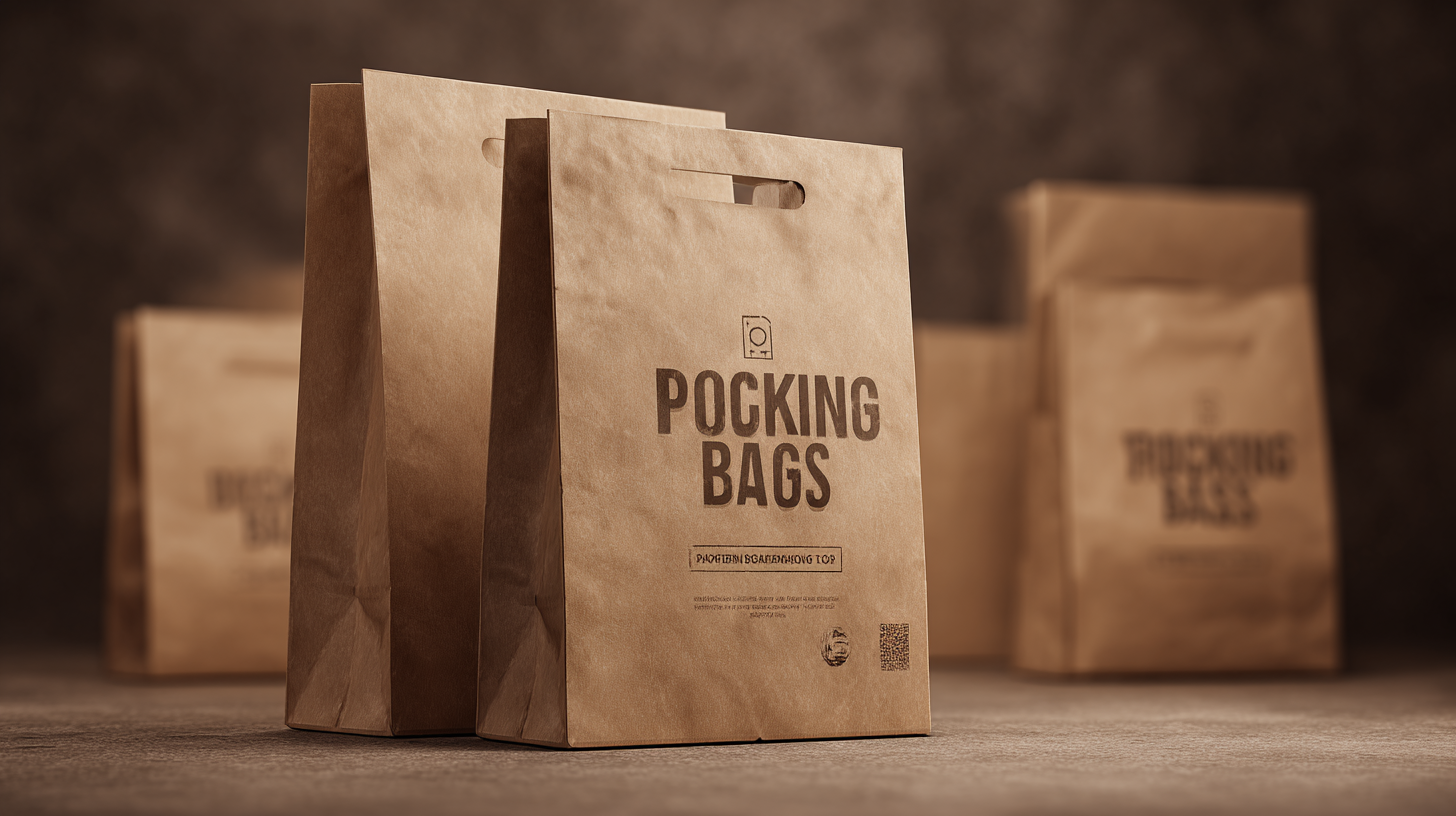Understanding Specifications: A Comprehensive Guide to Custom Best Packaging Bags
In today's competitive market, the demand for Packaging Bags Custom has surged as brands strive to differentiate themselves and enhance consumer experience. According to a recent study by Smithers Pira, the global flexible packaging market is projected to reach $320 billion by 2024, driven by the increasing preference for convenience among consumers. Custom packaging solutions not only cater to specific product requirements but also play a crucial role in brand identity and sustainability efforts. As companies navigate the complexities of consumer preferences and environmental impact, understanding specifications becomes essential in developing effective and appealing packaging. This comprehensive guide aims to shed light on various examples of custom packaging bags, highlighting their features, benefits, and the latest industry trends that are shaping the future of packaging design.

The Importance of Custom Packaging Bags in Today's Market
In today's competitive market, the significance of custom packaging bags cannot be overstated. A recent report by Smithers Pira highlights that the global market for packaging is expected to reach $1 trillion by 2024, with a growing emphasis on sustainable and customizable solutions. Custom packaging not only enhances brand visibility but also caters to the evolving consumer preferences for eco-friendly materials. According to a 2021 study by Nielsen, 73% of consumers are willing to change their consumption habits to reduce environmental impact, making custom packaging a crucial element for businesses aiming to connect with their audience.
When considering custom packaging solutions, here are a few tips to keep in mind: First, choose materials that reflect your brand's commitment to sustainability. Options like recycled plastic or biodegradable materials can resonate well with eco-conscious consumers. Second, utilize creative designs that stand out on the shelf; research shows that packaging can influence purchasing decisions by up to 70%. Finally, don’t forget about functionality—ensure that your packaging is not only visually appealing but also practical for consumers to use.
Investing in custom packaging bags is a strategic decision that aligns with both market trends and consumer expectations. By understanding the importance of tailored solutions in packaging, businesses can create a lasting impression and foster customer loyalty.
Key Specifications to Consider for Optimal Packaging Solutions
When it comes to custom best packaging bags, understanding the key specifications is crucial for achieving optimal packaging solutions. According to a report by Smithers Pira, the global flexible packaging market is expected to reach $300 billion by 2024, highlighting the significant demand for tailored packaging solutions. Key considerations include material choice, thickness, seal strength, and barrier properties, all of which can impact the integrity and shelf life of the product.
Tips: Always conduct a compatibility test between the packaging material and the product. This helps ensure that the chosen material preserves freshness and prevents contamination. Additionally, consider environmental factors; using biodegradable or recyclable materials can enhance brand image and meet the growing consumer demand for sustainable options.
Another vital specification is the design and size of the packaging. Studies show that 70% of purchasing decisions are influenced by packaging design (Packaging Strategies, 2022). A well-thought-out design not only stands out on the shelf but also serves functional needs such as ease of handling and storage efficiency. Ensure that your packaging aligns with your brand's identity while effectively communicating product benefits.
Tips: Collaborate with experienced packaging engineers to refine your design and materials, which can lead to improved consumer satisfaction and brand loyalty.

Choosing the Right Materials for Custom Packaging Bags
When selecting the right materials for custom packaging bags, it’s essential to understand the unique needs of your product. Different materials can provide varying levels of durability, barrier properties, and aesthetic appeal. For instance, polyethylene is a popular choice for its moisture resistance and flexibility, making it ideal for food products. On the other hand, kraft paper offers a more eco-friendly option that appeals to environmentally conscious consumers, while still providing strength and a natural look.
Furthermore, consider the end-use of the packaging when deciding on materials. If the bags will be exposed to external elements, materials like laminated films can offer additional protection against moisture and physical damage. It’s also worth exploring biodegradable or compostable materials if sustainability is a priority for your brand. Each material not only influences the functional aspects of the packaging but also impacts consumer perception, so it’s critical to choose wisely to align with your brand’s vision and values.
How to Work with Manufacturers for Unique Bag Designs
When embarking on a project to create custom best packaging bags, collaborating effectively with manufacturers is crucial. According to a report by Smithers Pira, the global market for flexible packaging is projected to reach $320 billion by 2027, reflecting an increasing demand for customized solutions. To navigate this landscape, it's essential to establish clear communication channels with your manufacturer from the start. Share your design vision, materials preference, and target demographic to ensure that every aspect aligns with your brand ethos.
Tips for successful collaboration include providing detailed specifications and reference samples to guide the design process. Additionally, consider conducting a cost analysis early on. Research shows that over 70% of custom packaging projects exceed budgets due to unforeseen production costs. Engaging in open discussions regarding pricing and potential adjustments can help you stay within budget while achieving your desired look and feel.
Another key point is to invest time in prototyping. A study by The Freedonia Group indicates that brands which invest in sample iterations streamline their final production process and enhance customer satisfaction. Prototypes allow you to test material durability, design aesthetics, and functionality before committing to a larger order, thereby minimizing risks and fostering innovation in your bag designs.

Global Trends in Custom Packaging: Sustainability and Innovation
The global packaging industry is witnessing significant transformations driven by sustainability and innovation. According to reports, the laminated tube packaging market is expected to grow from $3.7344 billion in 2025 to $2.3787 billion by 2033, reflecting a stable compound annual growth rate (CAGR) of 5.8%. Similarly, the rapid consumer goods (FMCG) packaging market is projected to experience substantial growth, with its value anticipated to rise from $823.83 billion in 2024 to $1.3408 trillion by 2032, representing a CAGR of 6.28%. These impressive figures underscore the mounting demand for eco-friendly packaging solutions as manufacturers pivot towards more sustainable practices.
In the cosmetics sector, the ODM cosmetics manufacturing market is forecasted to nearly triple from $3.084 billion in 2024 to $9.743 billion by 2032, with a remarkable CAGR of 15.1%. This growth indicates a clear trend towards customization and innovation in packaging, catering to the evolving preferences of environmentally conscious consumers. Furthermore, the e-commerce flexible packaging market is set to see a significant expansion, valued at $32.2 billion in 2024 and expected to grow at a CAGR of 9.2% through 2034. As brands increasingly focus on sustainable and innovative packaging solutions, these trends will likely shape the future of custom packaging across various sectors.